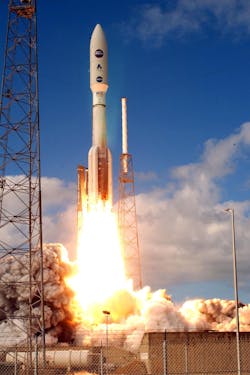Late last year, one of the biggest news stories on the 3D printing/additive manufacturing front was the announcement that GE had successfully begun mass production of fuel nozzle interiors for the next-generation LEAP engine using 3D printing technologies. In this example, one of the key benefits of 3D printing the nozzle interior was that 20 individual parts could be combined into one, 3D printed part.
This approach is now being put to use on the Atlas V rocket. According to United Launch Alliance (a joint venture between The Boeing Co. Lockheed Martin Corp. and the group behind the Delta and Atlas rockets), two Fortus 900mc 3D Production Systems from Stratasys are being used to update the Environmental Control System (ECS) duct on the Atlas V. The ECS duct plays in the key role in the countdown sequence of a launch, when it is used to deliver nitrogen to electronic components within the rocket booster.
The previous design for the ECS duct assembly contained 140 parts, but by modifying the design using FDM 3D printing technology, ULA was able to consolidate the number of parts to only 16. This significantly reduces installation time and results in a 57 percent part-cost reduction.
ULA expects to launch Atlas V rockets with the new 3D printed ducts in 2016.
ULTEM 9085 FDM thermoplastic material was the material chosen by UAL to produce durable, high-performance end-use parts for the ECS duct assembly. “ULTEM 9085 has great strength properties over a wide temperature range,” said Greg Arend, program manager for additive manufacturing at ULA. “We have done testing to show that it is very capable of withstanding temperatures from cryogenic all the way up to extreme heat. And it’s tough enough to handle the vibration and stress of lift off and flight. We’re very satisfied with its performance.”
The video below shows how ULA uses 3D printing to create the ECS duct assembly and how it’s used on the Atlas V rocket.

